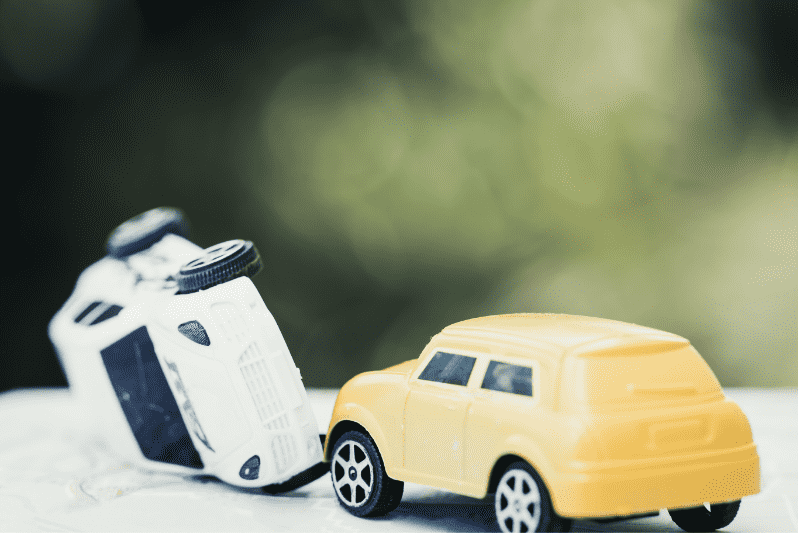
Are you thinking about buying a car insurance policy with only liability coverage?
I’ve gotten lots of phone calls from people who want to save money on their car insurance, so they ask me to quote a policy that only includes liability.
As an independent insurance agent, it’s my responsibility to help my clients know just what their purchasing and what their policy will cover.
Needless to say, it’s not often that I sell this kind of policy, but there are times when it’s in the best interest of my client to price out their car insurance policy with only liability coverage.
That brings us back to you.
Do you understand the differences between liability coverage and full coverage? Are you a good candidate for an auto policy with only liability coverage?
In this article, we’ll answer those questions. Here’s what I cover…
- A look at what liability covers
- The difference between liability, comprehensive, and collision
- When you should consider a liability-only policy
- What you’re risking by buying this coverage only.Liability
Liability Only Coverage
Liability coverage will cover any damage you cause to others and their property. In insurance terms, we say it covers bodily injury and property damage.
So with liability, if you cause an accident and run into someone else’s car, your policy will cover any damage to that car up to the limit amount set on your policy. If you hit someone’s mailbox or fencing, your policy will cover that damage as well.
And if you injure someone in an accident, your policy will cover their medical expenses.
Every auto insurance policy includes liability. And an auto insurance policy that only has liability coverage will have the lowest cost of all auto insurance policies.
Liability coverage offers no protection to your vehicle. So, if you buy a policy that only has liability coverage, your insurance won’t pay for damages done to your vehicle if you cause any kind of accident.
Full Coverage
You’ve probably had an insurance agent ask you if you want full coverage for your vehicle. Full coverage actually has three coverages: liability, comprehensive, and collision.
By law, every auto insurance policy has to carry liability coverage. Comprehensive and collision are optional, however.
Comprehensive
In my mind, you would think that comprehensive coverage will cover everything. But that’s not exactly true.
Unlike liability, comprehensive offers coverage for YOUR vehicle if it is damaged by anything other than an actual collision.
Let me give you a few examples.
If you are driving into town and a deer jumps out and runs into your car, comprehensive will cover this.
If your car is parked near a tree and a large branch falls damaging the hood of your car, with comprehensive coverage, this is covered.
If you’re driving home from work and get caught in a hail storm that damages your paint job and dings up your exterior, with comprehensive in place, you’re covered!
If a can of spray paint falls off of your garage shelves and damages the roof of your vehicle, comprehensive coverage will take care of it.
Even if someone keys your car or steals it, comprehensive coverage will kick in and cover the damage and loss!
You can decide to purchase a policy that has only liability and comprehensive coverage.
Collision
An auto policy with collision coverage will offer you the most coverage. Collision coverage protects you if you hit someone or something.
A policy with collision coverage also has comprehensive and liability coverage. That’s why your insurance agent will refer to this as full coverage.
Let’s say it’s snowing and you slide into a telephone pole. That would be considered a collision. After paying your $500 deductible, your insurance will pay for repairs to your vehicle up to the limit amount you set on your policy.
Now let’s say it’s raining and you hydroplane on the highway. Unfortunately, you hit another car. Thankfully no one is injured. However, your car is totaled!
With collision coverage, your insurance will pay you the amount your car was worth at the time of the accident. They will deduct the amount of your deductible before giving you a check for the value of your car.
When should I consider purchasing only liability?
First things first. If you have any kind of loan on your vehicle, you will not be permitted to buy liability only. Banks and lenders require insurance policies to include both comprehensive and collision coverage.
If you own your car outright, you do have the option to purchase only liability coverage. This decision depends on the age of your car, its current mileage, and how well the car holds its value.
The rule of thumb for only purchasing liability is this:
If the cost of full coverage is more than your vehicle’s value, you should only purchase liability.
To give you a practical example, imagine you have a vehicle worth $2,000. Your insurance agent tells you that full coverage will cost $2,200 this year. In this instance, it doesn’t make sense to purchase full coverage. You will be paying more for your insurance policy than the insurance company will pay you if something happens to your vehicle.
In this instance, it’s best to purchase liability and set aside money yourself to repair or replace your vehicle if you would need to.
For older vehicles and cars with high mileage, you should check the Kelly Blue Book to see your car’s worth. Then you can make an informed decision between a liability-only or a full coverage policy.
What am I risking if I only purchase liability?
For those of you who might be thinking, “I’d rather save some money on insurance and take my chances with a liability-only policy,” here are two things you should weigh out.
For most people, their car is an indispensable asset! They use it all of the time!
When you only buy liability coverage, you are risking not being able to repair your vehicle. If you’ve ever had even a small fender bender, you know how expensive it can be to repair your vehicle if it’s damaged.
For instance, I once had to replace a front bumper due to a small accident, and that alone was going to cost well over $600. And replacing the front driver’s side panel was going to cost an additional $400.
If you don’t have money saved to make those kinds of repairs, you may want to invest in a policy that will pay for those kinds of damage.
The other risk you are taking is not being able to replace your vehicle if it is totaled in an accident that you cause. If you’re dependent on your vehicle, this is a considerable risk!
If you are considering buying only liability coverage, you need to be able to purchase another vehicle if your car gets totaled.
With only liability in place, your insurance company will not pay out anything for your totaled vehicle.
Are you looking for ways to save on car insurance?
The biggest reason that most people want only to buy liability coverage is to save money. It may seem enticing to spend less on insurance and keep more in your pocket.
But if saving money is your most significant reason for this decision, it would be a good idea to contact your insurance agent first and ask if there are other ways you can lessen your insurance costs.
By raising deductibles or applying discounts that you may qualify for, you may find that you can save on your insurance and still have the coverage in place that you need.
If you think you are paying too much on your auto insurance, I’d recommend contacting an independent insurance agent to price out your policy with multiple insurance companies. This process doesn’t take much time.
If you’re not quite ready to do that but want to learn about other ways that you can save money on your car insurance, I’d suggest reading our article on the Top 5 Ways to Save Money on Your Car Insurance.
Related Articles:
The Unseen Costs of Cheap Auto Insurance
Can I Get An Auto Insurance Quote? Information I Need For My Agent

